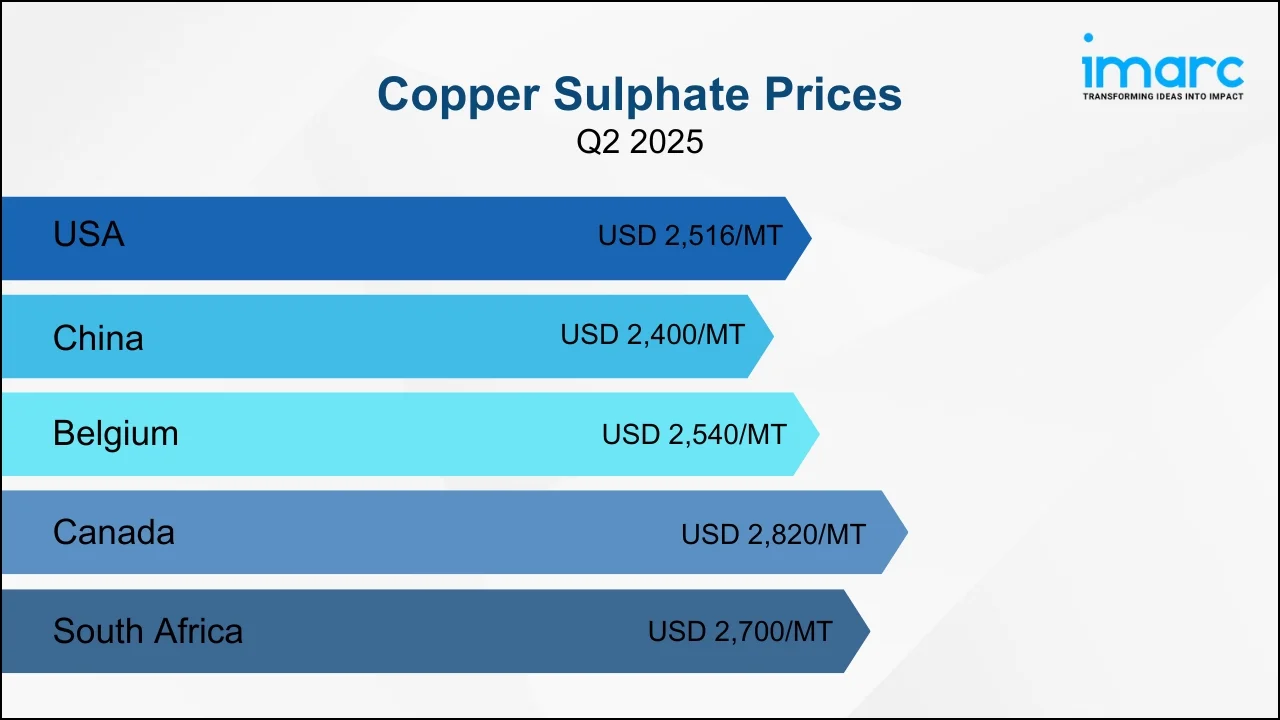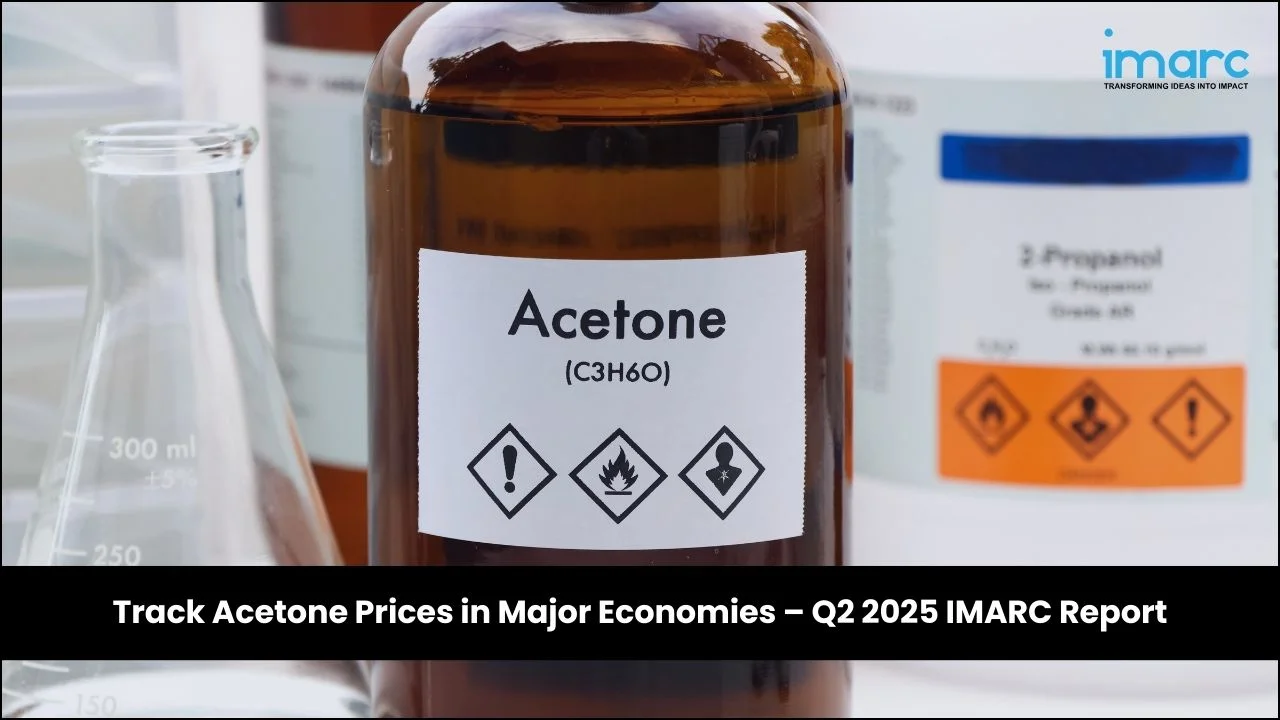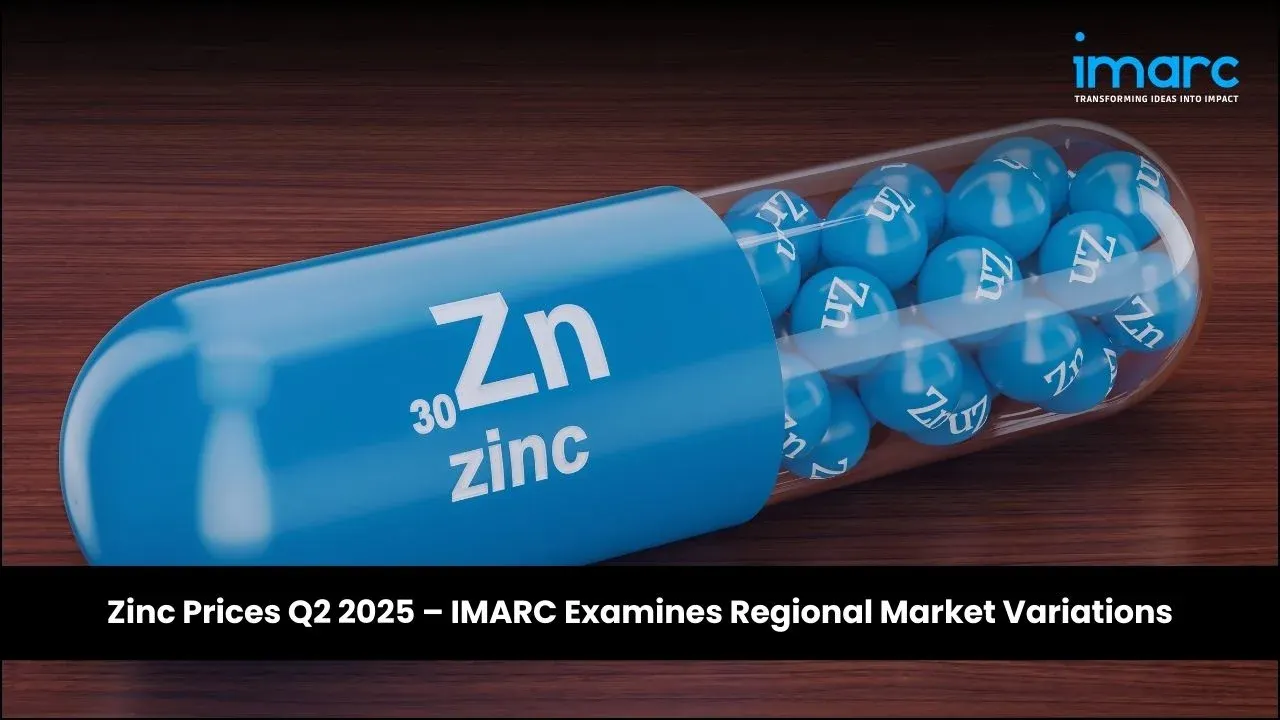Copper Sulphate Prices Q2 2025: IMARC Examines Supply-Demand Shifts and Market Outlook
04-Sep-2025_11zon.webp)
Amid tightening supply and shifting energy policies, the global copper sulphate industry is experiencing notable pricing fluctuations, according to IMARC Group’s latest publication, Copper Sulphate Price Trend, Index and Forecast Data Report 2025 Edition,” that provides updated insights for Q2 2025. The report highlights the way the industry is adjusting to refined copper availability, stronger seasonal demand from agriculture, and complex logistics constraints. Key markets shaping this trend include North America, Asia Pacific, and Europe, where supply limitations, port congestion, and costlier energy continue to influence pricing momentum.
Q2 2025 Copper Sulphate Prices:
- USA: USD 2,516/MT
- China: USD 2,400/MT
- Belgium: USD 2,540/MT
- Canada: USD 2,820/MT
- South Africa: USD 2,700/MT

To access real-time prices Request Sample
The current copper sulphate prices highlight the material’s essential role across agriculture, electroplating, mining, and chemical manufacturing, with sustained demand and supply constraints contributing to a stable to upward global price trajectory.
Key Regional Price Trends and Market Drivers:
United States
Copper sulphate prices reached USD 2,516/MT in June 2025, supported by strong demand from agriculture and chemical manufacturing and shaped by fluctuations in domestic copper cathode prices. Variable supply from smelting operations, higher inland freight rates amid fuel cost volatility, and regulatory inspections at select production sites contributed to temporary output and distribution disruptions.
China
Priced at USD 2,400/MT in June 2025, China’s copper sulphate pricing reflected shifts in refined copper availability and operating rates at major smelters. Robust demand from agriculture and electroplating, particularly in southern provinces, combined with environmental compliance costs, power curtailments in industrial zones, and export delays due to port congestion and container shortages.
Belgium
Belgium’s copper sulphate prices settled at USD 2,540/MT in Q2 2025. Prices were influenced by constrained copper feedstock and reliance on imported raw materials. Consistent demand from chemical processing and crop protection persisted, while rising energy prices, higher labor costs, and EU cross-border logistics challenges delayed finished-product deliveries.
Canada
In Canada, copper sulphate prices reached USD 2,820/MT in June 2025. Variable copper mining output and refining activity—especially in British Columbia and Ontario—combined with seasonal planting-season demand to tighten supply. Logistics costs rose due to trucking labor shortages and rail-hub disruptions, affecting regional distribution and inventory management.
South Africa
South Africa’s copper sulphate prices recorded USD 2,700/MT in Q2 2025, influenced by fluctuating local copper concentrate production and limited refining infrastructure. High import dependency, delays at Durban and Cape Town ports, steady demand from agricultural and mining sectors, and exchange-rate volatility against the US dollar shaped procurement and pricing.
Q2 vs. Q1:
| Country | Q2 2025 | Q1 2025 | Q2 vs. Q1 Trends |
|---|---|---|---|
| USA | USD 2516/MT | USD 2440/MT | Prices rose in Q2 as strong agricultural/chemical demand, smelting-linked supply variability, and higher inland freight replaced Q1’s oversupply and weak end-use demand |
| China | USD 2400/MT | USD 2305/MT | Prices increase in Q2. The growth is driven by robust downstream demand, environmental/power-related constraints, and logistics bottlenecks versus Q1’s post-holiday output increase and softer exports |
| Belgium | USD 2540/MT | USD 2454/MT | Prices rose in Q2. Gains reflect constrained feedstock, higher energy and labor costs, and EU logistics frictions, reversing Q1’s oversupply and muted industrial consumption |
| South Africa | USD 2700/MT | USD 2645/MT | Prices increased in Q2. Higher import reliance, port delays, and variable concentrate supply lifted prices from Q1’s fluctuating but generally tight conditions |
Copper Sulphate Industry Overview:
The global copper sulphate market reached a volume of 441.68 Kilo Tons in 2024 and is projected to reach a volume of 532.53 Kilo Tons by 2033, at a 2.00% CAGR during 2025-2033. The market demand is anchored by agriculture for fungicides, herbicides, and pest control, with additional pull from mining (ore flotation) and diverse chemical manufacturing applications.
Beyond these core uses; copper sulphate supports electroplating and several processing roles across industries. Growing population and food needs keep agricultural applications resilient, while construction-adjacent uses such as wood preservation and concrete treatment add breadth. Broader industrial activity underscores the requirement for inputs like copper sulphate, reinforcing steady, long-term consumption across end-use sectors.
Recent Market Trends and Industry Analysis:
Copper sulphate continues to play a central role in agriculture, where it is widely applied to protect crops from pests, weeds, and fungal diseases. Its consistent use in modern farming practices reflects the growing importance of agrochemicals in sustaining production and improving crop quality. In the mining industry, copper sulphate remains a critical input in processes designed to recover valuable metals, further underlining its industrial relevance. Additionally, the chemical and manufacturing sectors utilize it as a catalyst, pigment ingredient, and in electroplating applications, broadening its industrial footprint.
The construction sector also benefits from copper sulphate, particularly in applications such as wood preservation and concrete treatment. Growing infrastructure development worldwide is reinforcing its utility across building materials and related processes. Together, these applications highlight copper sulphate’s essential position in supporting agriculture, industry, and infrastructure, ensuring steady demand across global markets.
Strategic Forecasting and Analysis:
IMARC’s report incorporates forecasting models that project near-term price movements based on evolving trade policies, raw material supply, and technological trends. These tools enable businesses to mitigate risk, enhance sourcing strategies, and support long-term planning.
Key Features of the Report:
- Price Charts and Historical Data
- FOB and CIF Spot Pricing
- Regional Demand-Supply Assessments
- Port-Level Price Analysis
- Sector-Specific Demand and Supply Insights







.webp)




.webp)












